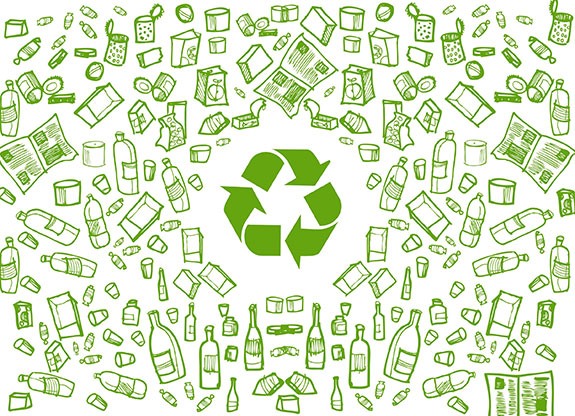Recycling Scavenger Hunt
- May 30, 2014
- 1 comment
 This past weekend was my son’s seventh birthday and we decided to have his party at one of the local parks. That way the kids don’t destroy our house and they have much more room to run around. One of the activities that my son requested was for us to have a scavenger hunt. He loves to search for and pick up all kinds of treasures, which my wife calls junk, everywhere he goes. It drives her crazy. I told her that “I have no idea where he gets it from,” as I tried to conceal the smirk on my face. “I’m a collector,” I tell her. “That’s different!”
This past weekend was my son’s seventh birthday and we decided to have his party at one of the local parks. That way the kids don’t destroy our house and they have much more room to run around. One of the activities that my son requested was for us to have a scavenger hunt. He loves to search for and pick up all kinds of treasures, which my wife calls junk, everywhere he goes. It drives her crazy. I told her that “I have no idea where he gets it from,” as I tried to conceal the smirk on my face. “I’m a collector,” I tell her. “That’s different!”So, instead of putting out new items throughout the park, as I’ve seen with other scavenger hunts, we have a recycling scavenger hunt so we can use what’s already in the environment. Also, that way we don’t accidentally leave rubbish behind if some of the items are not located. The children get to learn about the importance of recycling, preserving our environment and do their share to clean up the park as well. It doesn’t sound like fun at first, but the prizes are what really make this work. Hopefully, doing it just for the sake of improving our environment will come at a later time.
Each item is allocated a monetary value, of five cents each, with a maximum earning capacity of two dollars. One dollar just doesn’t seem to do it anymore. Blame it on inflation! The rules of the game are simple. Everyone has twenty minutes to gather as many of the items listed below, using rubber gloves. They must stay within the designated area and not take items from anyone else’s possession. That includes public garbage cans as those are generally the property of the City.
Scavenger Hunt List:
1) Aluminum cans
2) Glass bottles (Not Broken)
3) Plastic items
4) Paper products
5) Other discarded items
After time was called, each child brought their bag back to my table as the participant and I counted and separated the different materials. Items that could not be recycled were properly discarded in the trash. The children learned to identify the different materials as well as how to read the recycling symbols provided on the products to distinguish which items could be recycled. Once I tallied their prize money, the financial reward provided immediate gratification, which we all need to reinforce the importance of doing our share. Many parents collected with their children as there’s no replacement for modeling appropriate behavior. Once the children realized the monetary value to recycling, they wanted to do it at home. My son has his own recycling bin in the backyard. He knows how to separate the materials and often solicits his grandparents, and other family members to help him collect. Then, once a month we go and redeem his money, which he values since it was earned with hard work!
Filed in: Things To Do
One response to “Recycling Scavenger Hunt”
Leave a Reply
You must be logged in to post a comment.
[…] * To review the importance of “being green” and recycling, we dress up as green leprechauns and play the “Recycling Treasure Hunt” game (see our Playdate article Recycling Treasure Hunt). […]